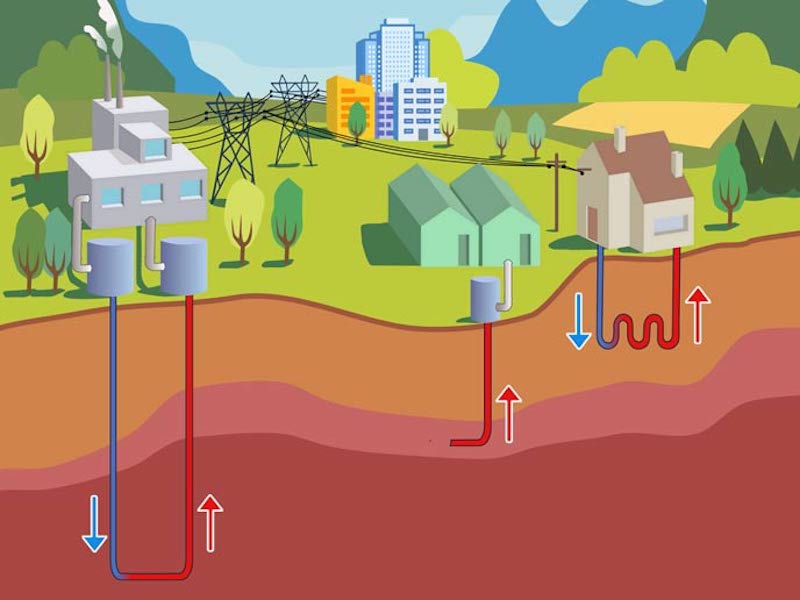Result briefs shared on geothermal research funded by the European Commission
The European Commission sees geothermal energy as a viable alternative energy source to help Europe reach its climate ambitions and has funded a number of geothermal research projects for which it has shared short result briefs.
The European Commission has been engaged in a number of efforts to provide viable alternative energy sources to achieve Europe’s climate ambitions.
In an article on the Cordis website of the Commission, it writes about the ongoing quest to combat climate change. As part of that new forms of carbon-neutral, environmentally friendly energy sources are being prioritised by the European Commission, especially following the unveiling of its Green Deal initiative.
Geothermal energy is one such promising avenue, and in this CORDIS Results Pack the Commission showcases the very latest innovative EU-funded research on both deep and shallow geothermal energy that will allow for a faster, wider and more efficient roll-out of this potentially game-changing alternative energy source.
The European Commission fully supports research and development in geothermal technologies, funding research projects through its Horizon 2020 programme on both the direct use of heat and the use of extracted heat for electricity generation focussing on cost reductions and improved performance. Historically, the funding levels for this form of renewable energy have been particularly low when compared to alternatives, such as wind, solar and biomass, but it has recently increased. For example, the EU’s Innovation & Networks Executive Agency (INEA), which manages almost all of the projects in this specific Results Pack, has a total budget of EUR 172 million allocated towards geothermal energy.
Now, following the announcement of the Commission’s dedicated Green Deal, where the Commission has set the ambition for Europe to become the first carbon-neutral continent by 2050, the impetus to further develop and eventually deploy geothermal technologies as a viable and serious contender as part of the EU’s energy mix will only increase further.
Twelve truly trailblazing projects
In the Results Pack, 11 full CORDIS Results in are featured in brief articles on the most recent EU-funded geothermal energy projects, plus a short introduction to a still ongoing but very promising initiative, GEOTHERMICA. These 12 projects cover the full spectrum of geothermal energy research and provide a holistic overview of what the key priorities are for further development and investment in these technologies so they become a vital source of alternative energy for Europe.
In particular, the DEEPEGS project has undertaken successful drilling tests in Iceland and beyond to help develop enhanced geothermal systems that will bring geothermal energy from an outsider to a major player, whilst the GEMex project has been working with Mexican researchers to assess and characterise two sites in the Trans-Mexican Volcanic Belt in order to propose efficient and achievable means for tapping into Mexico’s geothermal potential. Meanwhile, SURE tested the use of radial water jet drilling as a means of improving the importance and economic viability of geothermal wells, and the GeoWell project developed and tested new, reliable, economic and environmentally safe technologies for the design, completion and monitoring of high-temperature geothermal wells.
Finally, the Cheap-GSHPs, GEOCOND and GEOTeCH projects have been investigating and spearheading new innovations for how geothermal energy can be used as a clean energy source to heat and power buildings, whilst the MATChING project spearheaded European efforts to reduce the demand for cooling water through innovative technologies in thermoelectric and geothermal power plants.
Here the individual projects’ results in brief:
- New materials for (cost-) efficient geothermal energy systems in buildings
- Alternative drilling technology for deep geothermal applications
- World-record drilling depth signals potential for carbon-neutral Europe
- Increasing the productivity of insufficiently producing geothermal wells
- Warming up to promising sustainable heating and cooling technology
- Europe-Mexico collaboration tackles unconventional geothermal systems
- Deep metal reserves deliver renewable heat and valuable raw materials to the Earth’s surface
- Generating electricity without sapping Europe’s water supplies
- EU research helps extend working life of geothermal wells
- New stimulation methods for more efficient EGS treatment
- Geothermal system innovations benefit buildings large and small
- General: Introducing GEOTHERMICA, an umbrella initiative to help focus and target resources for the uptake and commercialisation of innovative geothermal
Source: Cordis Europe


















